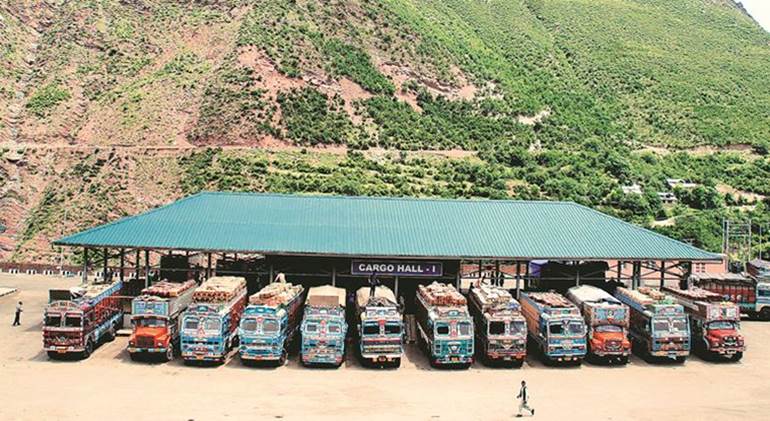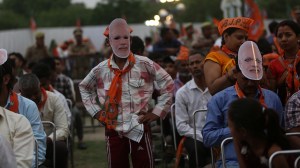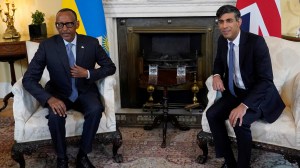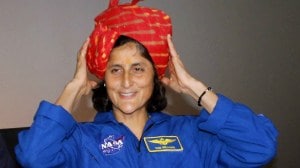- India
- International
Recalling agreements and disagreements: From buses to trains and ceasefire to trade, Indo-Pak pacts that hold
The Indus Treaty, MFN status are up for review. But despite often tense relations, India, Pak have built up a portfolio of confidence building measures and pacts that have survived the relationship’s many downs
 The cross-LoC buses have been a success, as has the cross-LoC trade (above), despite its obvious difficulties Shuaib Masoodi/Archive
The cross-LoC buses have been a success, as has the cross-LoC trade (above), despite its obvious difficulties Shuaib Masoodi/Archive
Prime Minister Narendra Modi on Monday held a meeting which is said to have discussed “maximum exploitation” by India of the three western rivers of the Indus system. And on Thursday, he will chair a meeting to review India’s Most Favoured Nation (MFN) status to Pakistan.
This is the first time that longstanding bilateral pacts are being pulled off the shelf for “review”. Despite generally tense relations, the two countries have over the years put in place a raft of confidence building measures and agreements that have withstood the many downs in their relationship.
Cross-LoC bus: The “Karvan-e-Aman” rolled on April 7, 2005 as a fortnightly service on the Srinagar-Muzaffarabad route, now runs weekly, and has rarely been suspended. A similar service between Poonch in Jammu and Rawalakot in PoK was started on June 20, 2006 through the Chakan da Bagh crossing. It operates once a week.
Cross-LoC trade: Another Kashmir-specific CBM, it was launched on October 21, 2008, and remained unaffected by the Mumbai attacks. Despite the absence of banking facilities that has kept the trade to barter, and restricted telecommunication links, trade volumes over the last 7 years are estimated to have crossed Rs 4,000 crore. Trucks now ply 4 days a week. 21 items are allowed, and the trade has been suspended at times — often during bouts of firing on the LoC, and when a truck from PoK was found carrying narcotics.
Trading across the LoC also takes place on the Poonch-Rawalakot route 4 days a week. A Joint Chamber of Commerce and Industry has been formed among traders from Jammu, Kashmir and PoK.

Delhi-Lahore bus: The “Sada-e-Sarhad” service was begun in 1999, with Prime Minister Atal Bihari Vajpayee travelling on its inaugural run. The bus continued through the Kargil war, was halted in the aftermath of the December 2001 Parliament attack, resumed in October 2003, and continued through the crisis of 2008. It now operates 6 days a week.
Amritsar-Lahore bus: The twice weekly “Dosti” bus, launched on January 20, 2006, crosses over at Wagah. There is also a bus service from Amritsar to Nankana Sahib.
Samjhauta Express: The Delhi-Lahore train through Attari was discontinued after the Parliament attack, but restarted in January 2004. The February 2007 bombing that killed 68 passengers, most of them Pakistani, did not lead Pakistani Foreign Minister Khurshid Kasuri to cancel his visit to New Delhi scheduled for the day after.
Thar Express: It was started in February 2006 to connect Karachi to Jodhpur through Munabao on the Indian side. The train runs weekly from both sides.
Wagah border trade: In 2012, Pakistan moved from a positive list to a negative list for trade with India, with 1,209 items that could not be traded. Of the rest, 137 items could be traded through the land crossing at Wagah. India imports mainly cement, gypsum, rock salt, dry dates and textiles; Pakistan imports mainly vegetables and cotton. In April 2012, the Integrated Check Post at Attari was inaugurated with improved trade and travel infrastructure. According to details on the MEA web site, the terminal is spread over 118 acres. The two sides have discussed several other initiatives too.
Pakistani investment in India: Perhaps the most remarkable step India took was to notify, on August 1, 2012, a decision to allow investment from Pakistan. In September, RBI removed restrictions on investment in Pakistan from India. It is not clear if any Pakistani has made use of this provision.
2003 ceasefire: After intense global backchannel efforts to bring India and Pakistan back to the negotiating table after the Parliament attack, the ceasefire came into force on November 26, 2003. It is not a written agreement. In August 2005, some terms were spelt out in a joint statement: both sides agreed to upgrade the existing hotline between the DGMOs by that September, hold monthly flag meetings between local commanders, and not to build any new posts and defence works along the LoC. The arrangement worked well until 2008, but after that, there have been dozens of violations each year, peaking in 2013. But the hotline still exists, and the DGMOs were in touch soon after the Uri attack.
Exchange of prisoners’ lists: Every year on January 1 and July 1, India and Pakistan exchange lists of nationals of each country who are lodged in the prisons of the other. The system came into effect in 2008, when scores of Indian fishermen were being detained by the Pakistan Coast Guard. The list is meant to facilitate easier tracking of prisoners and verification of their nationalities and sentences. The exchange has taken place regularly except for a year when India did not submit its list.
Visas: The two sides agreed to a new visa regime in May 2012, relaxing some of the earlier controls for the first time since 1974. It eased travel restrictions for businessmen, introduced a new category of “group tourism”, allowed visas on arrival to those over the age of 65, provided for a timeframe of 45 days to issue visas, and increased the earlier 3-city permissions to 5. But its implementation continues to be dogged by old caveats.
Additionally, a Protocol on Visits to Religious Shrines has existed since 1974. In 2007, the government told Parliament that 15 religious shrines in Pakistan are covered under the agreement. In 2014, it told the House that Pakistan was yet to respond to a 2005 request to include a shrine in Balochistan in the list.
EXPRESS OPINION
Apr 25: Latest News
- 01
- 02
- 03
- 04
- 05









































